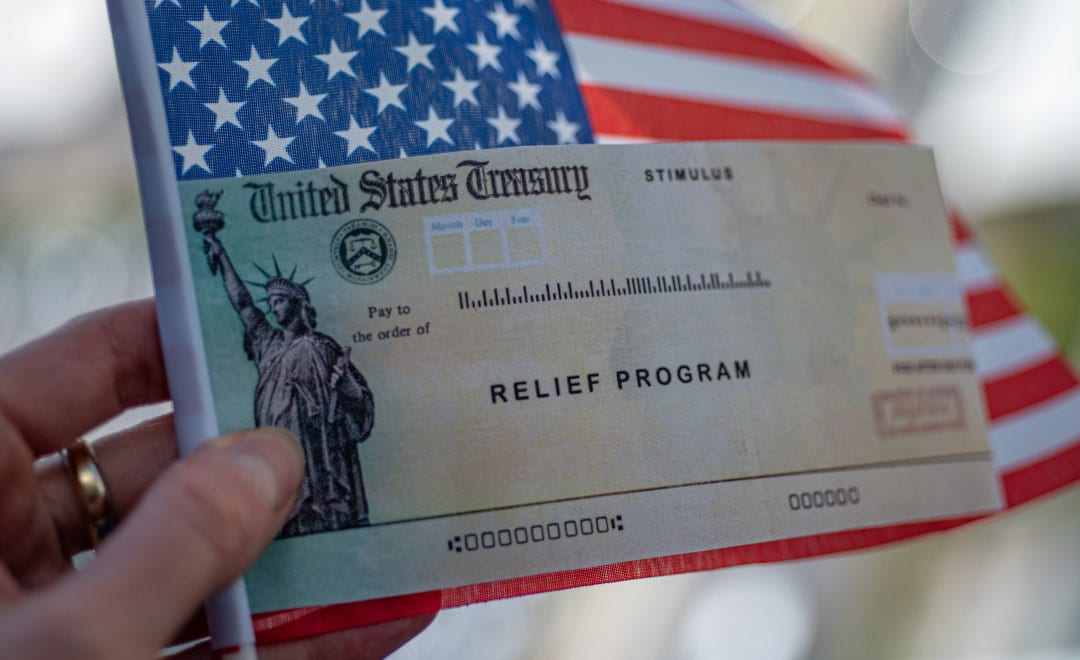The Consolidated Appropriations Act of 2021, an omnibus spending bill, was passed by Congress in late 2020. The Act included a $900 billion emergency relief packaged to assist individuals and businesses affected by the ongoing coronavirus pandemic.
About $166 billion was allocated to individual relief. Most individuals know this as “the $600 Congress gave taxpayers.” Like before, the $600 stimulus payment is a 2020 refundable tax credit that was based on 2019 returns. The compensation was sent automatically to taxpayers with adjusted gross income less than $75,000 for single filers and $150,000 for married filers. Incomes above that threshold will see their rebate gradually phased out until AGI reaches $87,000 single or $174,000 joint. Taxpayers will also receive $600 for each qualifying child younger than 17.
If you don’t qualify for the stimulus based on your 2019 return, but you do on your 2020 return, you will be able to claim the rebate when you prepare your 2020 taxes, benefitting those who had a significant change in income in 2020 or had a child during 2020. Furthermore, there is no clawback, so if your 2020 AGI is above the threshold, you will not have to repay the credit.
These stimulus payments are reported on Form 1444; however, this was sent separately from your initial stimulus payment in 2020. It also looked like a letter from President Trump acknowledging the pandemic and announcing the stimulus. In many cases, the letter came several months after the payment. If you’re one of the many who threw this letter out, don’t worry. You can use a bank statement showing the direct deposit from the IRS or the scan of the deposited check when preparing your 2020 tax returns. This proof is important should you now qualify for more based off your 2020 tax situation.
The 2021 Act also provides an additional $300 weekly benefit for those collecting unemployment benefits through March 14, 2021, adding an 11-week extension for those who exhaust their state unemployment benefits and also applies to independent contractors and part-time employees.
For businesses, the Act allocates an additional $284 billion to the Paycheck Protection Program rules created in the initial CARES Act in 2020. An additional $20 billion is earmarked for businesses in low-income communities and $15 billion for struggling live entertainment venues.
Furthermore, the Act clarifies some of the IRS interpretations of PPP loan usage. The IRS deemed that PPP funds were not taxable, but the business could not deduct expenses paid with PPP funds. The IRS interpreted this as a “double-dip” benefit and disallowed it. Congress has clarified that this was the intent put forth in the initial bill. Now PPP loans that are forgiven are allowed deductions for deductible business expenses paid with a PPP loan.
Another benefit comes in the way of business meals. Business meals provided by a restaurant are now fully deductible in 2021 and 2022. The wording includes catered, delivered, or to-go meals, so this provision is also intended to help the suffering restaurant industry.
These are just a few of the major provisions in the 2021 Act. If you have questions on whether the provisions in this Act apply to your situation, the Experts at Henssler Financial will be glad to help:
- Experts Request Form
- Email: experts@henssler.com
- Phone: 770-429-9166






